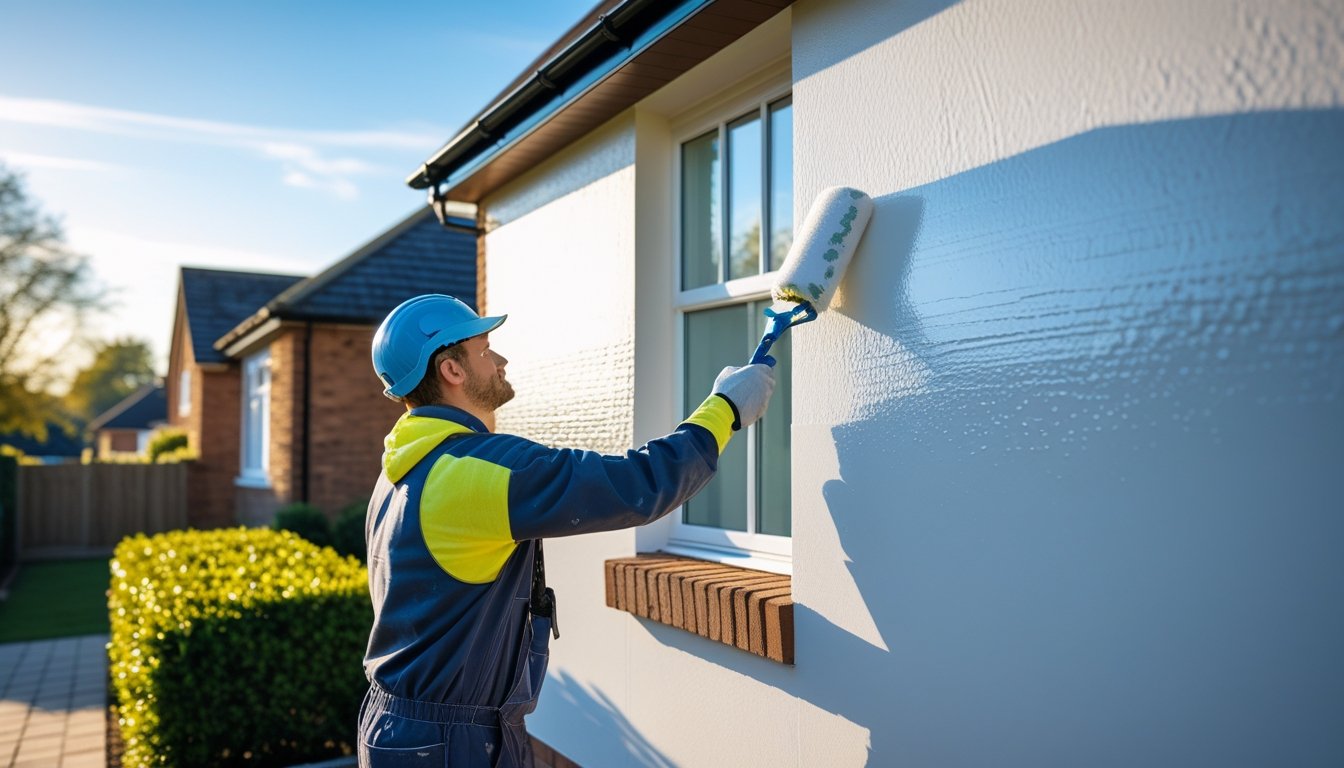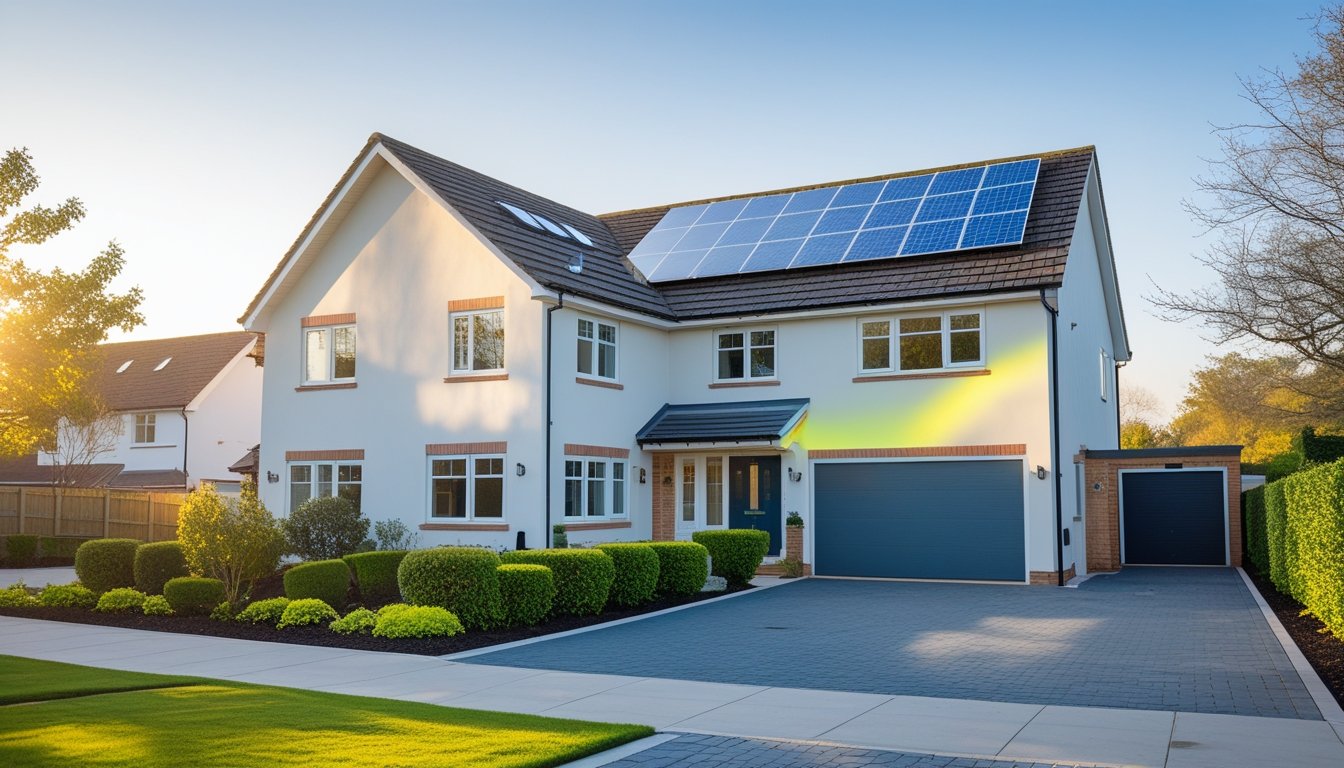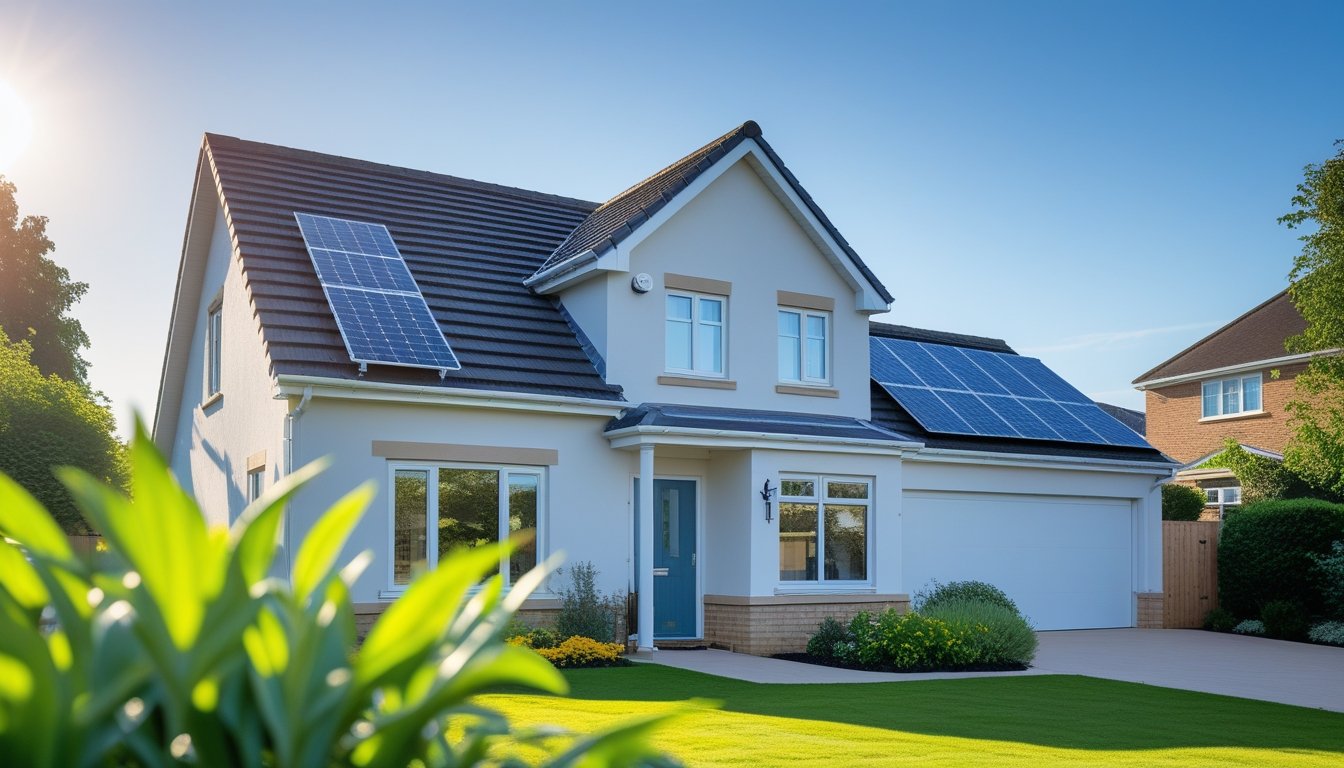Late updated: 02 Jul 2025 12:07
Written by: Eleanor Hartman
Enhancing UK Home Energy Efficiency With Heat Reflective Paint: A Sustainable Solution
Enhancing energy efficiency in our homes has become a priority as we strive to reduce costs and contribute to sustainability. One innovative solution gaining traction in the UK is heat reflective paint. By effectively reflecting sunlight and reducing heat absorption, heat reflective paint can significantly lower energy bills while maintaining a comfortable indoor environment.

This remarkable technology is not just for commercial buildings; it's also perfectly suited for residential applications. Our rooftops, exterior walls, and other exposed surfaces can benefit greatly from this simple yet effective measure. Incorporating heat reflective paint into our home improvement plans is an easy and impactful way to combat rising energy costs.
With the summer months often bringing increased utility bills, embracing solutions that offer both environmental and financial benefits is crucial. As we continue to seek ways to live sustainably, let's explore how this versatile paint can transform our living spaces and pave the way for a more energy-efficient future in the UK.
Key Takeaways
- Heat reflective paint reduces energy bills by reflecting sunlight.
- It's suitable for rooftops and walls in UK homes.
- Offers both environmental and financial benefits.
Understanding Heat Reflective Paint and Its Benefits
Heat reflective paint is a crucial component in enhancing energy efficiency in buildings. By reflecting solar radiation and reducing heat absorption, these paints play a significant role in minimising energy consumption and cooling costs. Let's take a detailed look at how heat reflective paints function, their comparison to traditional paints, and their advantages both economically and environmentally.
How Heat Reflective Paint Works
Heat reflective paint is engineered with advanced pigments that reflect a substantial portion of the sun’s infrared radiation. This limits the amount of heat absorbed, keeping surfaces cooler.
The science revolves around the paint’s ability to reflect solar radiation, including infrared rays that typically contribute to heat build-up. Cool roof coatings often use this technology, extending its benefits to walls and other external structures. This results in improved thermal comfort, as less heat is transferred indoors. By reflecting between 50-90% of infrared radiation, these paints help maintain lower indoor temperatures, contributing to both energy savings and reduced cooling costs.
Comparing Heat Reflective Paint to Traditional Paints
Traditional paints usually absorb solar radiation, leading to heat retention. In contrast, heat reflective paints are designed to maximize reflection and minimize absorption.
When applied to building exteriors like roofs and walls, these paints can be twice as effective in reducing indoor temperatures compared to conventional paints. This is primarily due to their unique composition which deflects heat rather than absorbing it. By choosing heat reflective solutions, we can significantly lower energy bills and also contribute to the fight against the urban heat island effect, a common issue in densely populated areas.
Environmental and Economic Advantages
Heat reflective paints offer a dual advantage of being eco-friendly and cost-effective. Economically, they can cut down energy costs due to decreased reliance on air conditioning, translating to substantial cost savings over time.
Environmentally, these paints are pivotal in promoting sustainable living. By lowering the demand for electricity, we can reduce carbon emissions and our overall carbon footprint. Moreover, they help in mitigating the environmental impact of buildings by increasing energy efficiency and reducing greenhouse gas emissions. Embracing this technology not only aligns with sustainable practices but also enhances the longevity of building materials by protecting them from thermal stress.
Practical Applications for UK Homes

Heat reflective paint offers a practical solution for enhancing energy efficiency in UK homes. By targeting suitable surfaces, ensuring proper application, and considering the unique UK climate, homeowners can significantly reduce energy costs and improve indoor comfort. We will explore essential maintenance practices to ensure long-lasting benefits.
Suitable Surfaces and Materials
Roofs and exterior walls are prime candidates for heat reflective paint. Roofing materials like tiles or metal can benefit immensely. Reflective coatings are particularly effective on surfaces exposed to direct sunlight, where solar heat is a major concern, particularly in urban areas.
It's crucial to inspect these surfaces for compatibility. Materials such as asphalt shingle or concrete can require specific types of reflective paint. Reflective pigments in these paints can aid in reducing air conditioning costs by minimising heat absorption.
Preparation and Application Methods
Surface preparation is a pivotal step. It ensures proper adhesion and durability of the reflective paint. We must clean surfaces thoroughly to eliminate dust, dirt, and old paint. In some cases, priming may be necessary to enhance bonding. The application process usually involves either spraying or rolling, depending on the surface and the paint type.
It’s advisable to hire professional services for large areas like roofs. Professional application can enhance the efficiency of the paint, ensuring even coverage and preventing common issues like peeling. Proper application directly influences insulation properties and reduces thermal bridging.
Factors Affecting Performance in the UK Climate
The UK climate, with its unique weather patterns, can impact the performance of heat reflective paint. Factors such as humidity and UV exposure levels play a role. While our cooler climate may reduce the immediate need for additional cooling, reflective coatings can still make a significant difference in the summer months.
Wind and rain can affect the application process and final outcome. Therefore, it's crucial to choose days with favourable weather conditions for applying these coatings. UV protection features in the paint contribute to its long-term effectiveness and help maintain optimal indoor temperatures.
Maintenance and Longevity
Regular maintenance is key to ensuring home comfort and the longevity of reflective coatings. Periodical inspections help in identifying signs of wear and tear early. Cleaning the coated surfaces at least once a year will prevent dirt build-up, which can affect reflectivity.
Address any small repairs promptly to avoid larger issues. Recoating might be necessary every few years, depending on environmental conditions and initial application quality. By maintaining these coatings, we can enjoy sustained energy efficiency benefits, leading to lower cooling bills and improved indoor comfort year-round.
Frequently Asked Questions

In our quest to improve energy efficiency using heat reflective paint, we've identified several key areas of interest. These topics highlight the versatility and advantages of this innovative solution.
How does heat reflective paint contribute to energy savings in homes?
Heat reflective paint works by reducing the amount of heat absorbed by the building's exterior surfaces. This leads to lower indoor temperatures during warmer months, thereby decreasing the reliance on air conditioning and ultimately reducing energy bills. The paint reflects solar energy away, minimising heat penetration.
What are the main benefits of using heat reflective paint in residential properties?
This type of paint offers enhanced energy efficiency and increased thermal comfort. By keeping homes cooler in summer and helping maintain warmth in winter, it contributes to reduced energy consumption and cost savings. Moreover, it extends the lifespan of exterior surfaces by protecting them from weathering.
Can heat reflective paint be applied to all types of exterior surfaces?
Heat reflective paint can be applied to a variety of surfaces, including concrete, masonry, and some wood sidings. It's important to ensure the surface is properly prepared and compatible with the paint formulation for optimal performance. Different materials may require specific preparation techniques to achieve the best results.
What is the longevity of heat reflective paint when used for home energy efficiency?
This paint typically has a lifespan of several years, depending on the quality of the product and environmental conditions. Regular maintenance and occasional reapplication may be necessary to maintain efficacy. Proper application and drying are crucial to ensure maximum longevity.
How does heat reflective paint work to reduce heat loss in colder months?
During colder periods, heat reflective paint helps retain internal warmth by reducing the rate of heat conduction through walls. This assists in keeping heating costs down. Although primarily used for cooling benefits, it does offer some insulation that can be advantageous year-round.
Are there any government incentives for applying energy-efficient coatings like heat reflective paint?
In the UK, there might be local or national schemes that provide incentives for improving home energy efficiency. It is advisable to check current government programmes or consult with local authorities to see if any grants or subsidies are available for this type of home improvement.